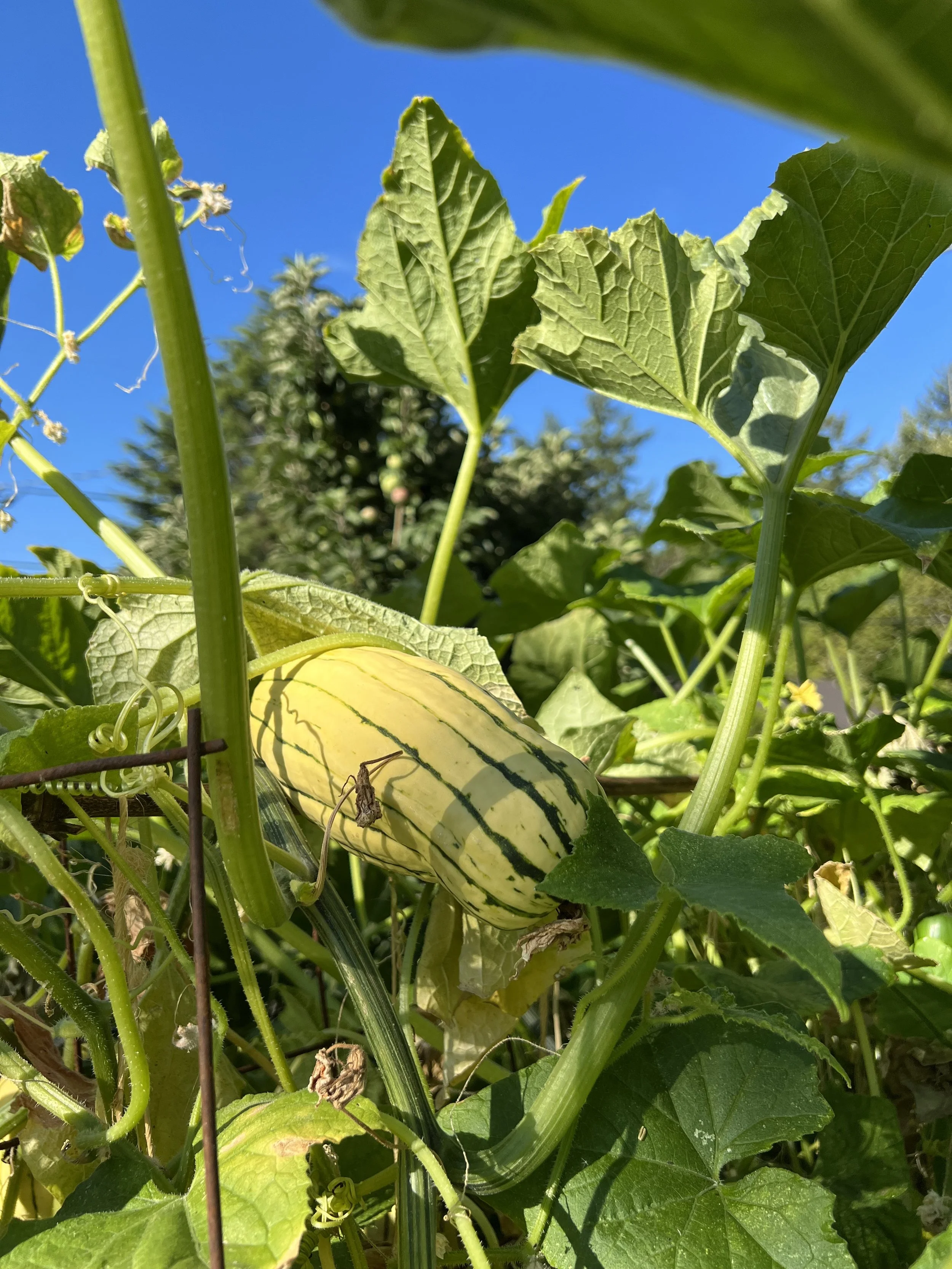Growing winter squash
Space individual plants 4 to 6 feet apart.
Before planting, add some general purpose fertilizer and compost to the soil.
Keep the soil evenly moist.
It can be beneficial to prune older, damaged, or very crowded leaves from squash plants. This allows bees easier access to the flowers. If you have ever had small shriveled squash fruit that do not develop, the reason is likely lack of pollination. Planting flowers nearby that are attractive to bees will also help.
To harvest, leave fruit on the vine until fully mature with a firm rind. Cut the stem with a few inches remaining attached to the fruit. If you plan to store the fruit, wash with a bleach solution of 10 parts water and one part bleach. Dry and store at 50 to 60 deg. F. with good air circulation.
PLEASE NOTE: The plants on my farm table have NOT been hardened off. They are straight from the greenhouse.
You can do one of the following:
1. Expose them gradually to outdoor conditions over a week
-OR (as I do)-
2. Plant them immediately and give them protection from excess sun, wind, and rain for a week or two.
Winter squash ‘Little Gem Red Kuri’
Little Gem Red Kuri
80 days. Cute, small red kuri type fruit are a good size in the kitchen and for market. Plants produce numerous fruit that weigh 2-5 lbs. each. Stores well and has dense, finely-textured flesh. This variety is even good raw, sliced in salads or diced as a snack. It is crunchy and sweet like a carrot, but not as watery, and the nuttiness is almost addictive – much like eating carrots and chestnuts. We love its sweet flavor diced and sautéed with garlic and soy sauce. Good uniformity and bright color, does well even in challenging conditions. We think Little Gem is the perfect size for a kuri squash and its high yield makes it a great choice for market farms. Seed produced by Avoca in Corvallis, Oregon. (Adaptive Seeds)
Winter squash ‘Bush Delicata’
Bush Delicata
80 days. This AAS winner has a tidy bush habit that spreads only about 4–6 feet. The 1 ½–2 pound oblong-shaped squash have creamy white skin with green stripes and flecks. Inside, the flesh is smooth and has a sweet nutty flavor with hints of brown sugar and butter. Tolerant of powdery mildew. Open pollinated. (Territorial Seed)
Winter squash butternut ‘Butterscotch’
Butterscotch
Tastiest small butternut.
Sweet, rich, complex flavor. The perfect size for dinner (no leftovers) and ideal for growers selling at farmers' markets and filling CSA boxes. Matures early at 1 1/2–2 lb., with no curing needed before it can be enjoyed. Stores up to 3 months after harvest. Short vines. Our thanks to Cornell University for working with us to develop this variety. NOTE: If growing for the 1-lb size, we recommend giving each plant only 6 sq.ft. of space. AAS Winner. F1 hybrid. (Johnny’s Selected Seeds)




